Phylum Coelenterata
They are also known by the name Cnidaria. They are radially symmetrical aquatic, primarily marine, sessile, or free-swimming organisms. Typically, these are invertebrate species with a very basic tissue arrangement. Coelenterates can be found in colonies or alone. Coelenterates are the simplest animal group with genuine tissues and the coelenteron or gastrovascular cavity as a distinguishing feature. The word Cnidaria comes from the stinging capsules or nematocysts found on the tentacles and body, which are called Cnidoblasts or Cnidocytes. Cnidoblasts are the phylum Cnidaria's distinguishing trait.They contain stinging capsules called nematocysts. It aids in both prey capture and defence. Cnidoblasts are employed for prey capture, defence, and anchoring. Cnidarians are diploblastic and have tissue-level organization. They have a single aperture in the center of their gastro-vascular cavity, and their mouth is hypostome. Extracellular and intracellular digestion are both involved.The skeleton of some cnidarians, such as corals, is made of calcium carbonate. Polyp and medusa are the two primary body types of cnidarians. The former, like Hydra, Adamsia, and others, are sessile and cylindrical, whereas the latter, like Aurelia or jellyfish, is umbrella-shaped and free-swimming. Cnidarians often show alternation of generations (Metagenesis). When both polyps and medusae exist within a Cnidarian life cycle, polyps reproduce asexually by budding off medusae, and medusae form the polyps sexually (e.g. Obelia). Examples: Physalia (Portuguese man-of-war), Adamsia (Sea anemone), Pennatula (Sea-pen), Gorgonia (Sea-fan), and Meandrina (Brain coral).
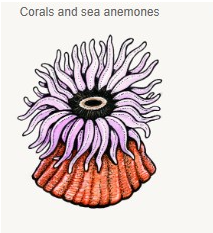
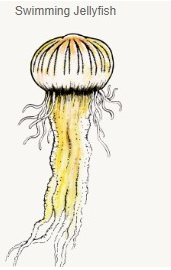
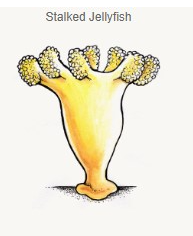
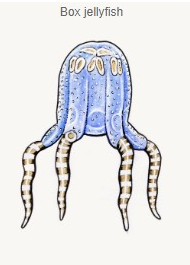
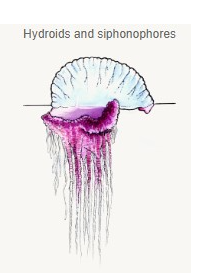
Figure 6: Phylum Cnidaria.

 ACME SMART PUBLICATION
ACME SMART PUBLICATION
